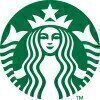Assistant Store Manager
200+ Assistant Store Manager Interview Questions and Answers

Asked in Bluestone.com

Q. According to your understanding, what is the role of a store manager?
A store manager oversees daily operations, ensuring customer satisfaction, managing staff, and driving sales performance.
Staff Management: A store manager recruits, trains, and supervises staff, ensuring they provide excellent customer service. For example, conducting regular training sessions to improve product knowledge.
Inventory Control: They manage inventory levels, ensuring that stock is replenished timely to meet customer demand. For instance, implementing a system to t...read more

Asked in Bluestone.com

Q. What are your Key Performance Indicators (KPIs), and what formulas do you use to calculate them?
KPIs for an Assistant Store Manager include metrics like sales, customer satisfaction, and inventory turnover to measure performance.
Sales Growth: Calculated as (Current Period Sales - Previous Period Sales) / Previous Period Sales x 100. Example: If sales grew from $10,000 to $12,000, growth is 20%.
Customer Satisfaction Score: Measured through surveys, calculated as (Number of Satisfied Customers / Total Customers Surveyed) x 100. Example: 80 out of 100 customers satisfied g...read more
Asked in Vijetha Super Market

Q. Could you provide an example of how you would prevent stock losses and increase sales?
Implementing effective inventory management and customer engagement strategies can reduce stock losses and boost sales.
Conduct regular inventory audits to identify discrepancies and prevent theft.
Implement a robust training program for staff on loss prevention techniques.
Utilize technology, such as RFID tags, to track inventory in real-time.
Enhance customer experience through personalized service, leading to increased sales.
Promote seasonal sales and loyalty programs to encou...read more
Asked in Vijetha Super Market

Q. How do you respond to unexpected customer issues and keep them happy?
I address unexpected customer issues with empathy, quick solutions, and proactive communication to ensure satisfaction.
Listen actively to the customer's concern to fully understand the issue.
Apologize sincerely for any inconvenience caused, showing empathy.
Offer immediate solutions, such as a refund or replacement, if applicable.
Follow up with the customer after resolving the issue to ensure satisfaction.
Train staff to handle unexpected issues effectively, using role-playing ...read more

Asked in CANTABIL RETAIL INDIA

Q. What are Key Performance Indicators (KPIs) and how are they used in your organization?
KPIs are measurable values that demonstrate how effectively an organization is achieving key business objectives.
KPIs help track performance against goals, such as sales targets or customer satisfaction.
Examples include sales growth percentage, average transaction value, and inventory turnover rate.
They provide insights for decision-making and strategy adjustments.
Regularly reviewing KPIs helps identify trends and areas for improvement.

Asked in Blinkit

Q. How can a rider earn 24000 monthly with 2.3 orders per hour?
To earn 24000 monthly with 2.3 orders per hour, focus on efficiency and maximizing order volume.
Calculate total hours worked: Monthly hours = 24000 / (2.3 orders/hour) = approximately 10435 hours.
Increase order volume by optimizing delivery routes and reducing wait times.
Implement strategies to encourage repeat customers, boosting order frequency.
Utilize promotions or discounts to attract more orders during peak hours.
Assistant Store Manager Jobs




Asked in M Baazar

Q. What is ABV,what is KPI,what you should do for customers satisfied?
ABV stands for Alcohol By Volume, KPI stands for Key Performance Indicator. To ensure customer satisfaction, you should provide excellent service, address concerns promptly, and exceed expectations.
ABV is a measure of the alcohol content in a beverage, typically expressed as a percentage.
KPIs are specific metrics used to evaluate the success of a business or individual in achieving goals.
To ensure customer satisfaction, provide excellent service, address concerns promptly, an...read more
Asked in LubOil Filtration Systems

Q. What is inventory valuation, and what methods are used to assess it?
Inventory valuation determines the monetary value of a company's inventory at a specific time.
1. **Definition**: Inventory valuation is the process of assigning a monetary value to the inventory a business holds.
2. **Importance**: It affects financial statements, tax calculations, and business decisions.
3. **Methods**: Common methods include:
- **FIFO (First-In, First-Out)**: Assumes oldest inventory is sold first. Example: A bakery sells its oldest bread first.
- **LIFO (Las...read more
Share interview questions and help millions of jobseekers 🌟


Asked in Aditya Birla Fashion and Retail

Q. What are the Key Performance Indicators (KPIs) and Key Result Areas (KRAs) for a retail store?
KPIs and KRAs are essential metrics for measuring retail store performance and achieving business objectives.
Sales Revenue: Total sales generated within a specific period, e.g., monthly sales targets.
Customer Satisfaction: Measured through surveys or feedback, aiming for a high Net Promoter Score (NPS).
Inventory Turnover: Ratio of sales to inventory, indicating how quickly stock is sold, e.g., a turnover rate of 6 times a year.
Employee Productivity: Sales per employee, assess...read more

Asked in 1 India Family Mart

Q. What is your understanding of the business and store area?
Our business is a retail store that specializes in selling clothing and accessories.
We offer a wide range of clothing options for men, women, and children.
We also have a variety of accessories such as shoes, bags, and jewelry.
Our store is located in a busy shopping mall, attracting a large number of customers.
We focus on providing excellent customer service and creating a pleasant shopping experience.
We regularly update our inventory to stay on top of the latest fashion trend...read more

Asked in V-bazaar Retail

Q. What is your experience with Key Result Areas (KRA)?
I have extensive experience in setting and achieving Key Result Areas (KRAs) in my previous roles.
Developing clear and measurable KRAs for team members
Regularly monitoring progress towards KRAs
Providing support and guidance to help team members achieve their KRAs
Adjusting KRAs as needed based on performance and business needs

Asked in Citylife Retail

Q. What do you know about Value format?
Value format is a retail format that offers products at a lower price point than traditional supermarkets.
Value format stores typically have a smaller footprint than traditional supermarkets
They offer a limited selection of products, focusing on essential items
Value format stores often have their own private label brands
Examples of value format stores include Aldi, Lidl, and Dollar General

Asked in Varun Beverages

Q. How do you manage discrepancies in physical inventory?
I manage inventory discrepancies through systematic checks, team collaboration, and corrective actions to ensure accuracy.
Conduct regular cycle counts to identify discrepancies early.
Implement a standardized process for receiving and stocking items to minimize errors.
Train staff on proper inventory management techniques, such as scanning barcodes.
Investigate discrepancies by comparing physical counts with system records and identifying patterns.
Use inventory management softwa...read more

Asked in A G Construction

Q. How many types of aggregates are required on site?
There are several types of aggregate that may be required on site for construction purposes.
Common types of aggregate include gravel, sand, crushed stone, and recycled concrete.
The specific types of aggregate needed depend on the project requirements and the intended use.
For example, fine aggregate like sand is often used for mortar and concrete mixtures, while larger aggregates like gravel are used for road construction.
Aggregates can also vary in terms of shape, size, and c...read more

Asked in A G Construction

Q. How many types of oils are used in machinery?
There are various types of oils used in machinery for lubrication and cooling purposes.
Mineral oils: commonly used in machinery
Synthetic oils: offer better performance and stability
Biodegradable oils: environmentally friendly option
Hydraulic oils: used in hydraulic systems
Gear oils: for gearboxes and transmissions
Compressor oils: for air compressors
Turbine oils: for turbines
Heat transfer oils: used in heat transfer systems
Asked in Soha Developers

Q. What is your understanding of inventory management?
Inventory management involves overseeing the flow of goods from manufacturers to warehouses to stores, ensuring optimal levels are maintained.
Monitoring and tracking inventory levels
Forecasting demand to prevent stockouts or overstocking
Implementing inventory control measures to minimize shrinkage
Utilizing inventory management software for efficient tracking
Coordinating with suppliers to ensure timely replenishment

Asked in Vishal Mega Mart

Q. Per sqft value, department and sub departments contribution.
The question is asking about the contribution of each department and sub-department per square foot value.
Calculate the sales per square foot for each department and sub-department
Analyze the data to determine the contribution of each department and sub-department
Identify areas for improvement and develop strategies to increase sales per square foot
Examples: Women's clothing department has a higher sales per square foot than men's clothing department
Sub-departments like shoes...read more

Asked in V2 Retail

Q. What is DPN , what is pick list
DPN stands for Direct Product Notification. A pick list is a document that lists the items to be picked from the inventory for fulfilling customer orders.
DPN is an acronym for Direct Product Notification.
A pick list is a document that outlines the items to be picked from the inventory.
DPN is used to notify the store about new products or updates.
Pick lists are used by store employees to gather the necessary items for fulfilling customer orders.
For example, when a new product ...read more

Asked in Citylife Retail

Q. What is margin and how is it calculated?
Margin is the difference between the selling price and the cost of goods sold.
Margin is expressed as a percentage or a dollar amount.
To calculate margin, subtract the cost of goods sold from the selling price.
Then divide the result by the selling price and multiply by 100 to get the percentage margin.
For example, if an item costs $50 and is sold for $75, the margin is $25 or 33.3%.

Asked in Red Tape

Q. What strategies can be implemented to increase business growth?
Implementing targeted strategies can significantly boost business growth and enhance customer engagement.
Enhance customer experience through personalized service, such as loyalty programs that reward repeat customers.
Utilize social media marketing to reach a broader audience, showcasing promotions and engaging with customers directly.
Expand product offerings based on customer feedback, like introducing seasonal items that cater to local preferences.
Optimize inventory manageme...read more

Asked in Yum!

Q. Food coast management Forcoasting P&L line by line analise Store operational management Sale develpment activities
Food cost management, P&L analysis, store operational management, and sales development activities are key aspects of the Assistant Store Manager role.
Food cost management involves monitoring and controlling the expenses related to food items in the store.
P&L line by line analysis refers to examining the profit and loss statement in detail to identify areas of improvement.
Store operational management includes overseeing day-to-day operations, ensuring smooth functioning, and ...read more

Asked in India Retails & Hospitality

Q. How do you manage inventory and avoid stock issues?
I utilize data analysis, regular audits, and effective communication to manage inventory and prevent stock issues.
Implement a robust inventory management system to track stock levels in real-time.
Conduct regular inventory audits to identify discrepancies and adjust orders accordingly.
Analyze sales trends to forecast demand and adjust inventory levels proactively.
Establish strong relationships with suppliers to ensure timely restocking and flexibility in orders.
Utilize safety ...read more
Asked in Medivac Surgical

Q. Which create GIN, MRN,PSV, EMR, EMC, PHYSICAL VERIFICATION
These are acronyms for various processes and procedures in inventory management.
GIN - Goods Issued Note
MRN - Material Receipt Note
PSV - Physical Stock Verification
EMR - Emergency Medical Response
EMC - Electromagnetic Compatibility
PHYSICAL VERIFICATION - A process of physically counting and verifying inventory

Asked in M Baazar

Q. What is KRA ,How increase sale,how will give motivation your staff.
KRA stands for Key Result Areas. To increase sales and motivate staff, set clear KRA goals, provide training, offer incentives, and recognize achievements.
Set clear Key Result Areas (KRAs) for each staff member to align with sales goals
Provide regular training and development opportunities to improve skills and knowledge
Offer incentives such as bonuses, commissions, or rewards for meeting or exceeding sales targets
Recognize and reward staff achievements to boost morale and mo...read more

Asked in Forest Essentials

Q. Describe your morning, night, and weekly skincare routines.
A comprehensive skincare routine includes morning, night, and weekly practices for healthy skin.
Morning: Cleanse with a gentle cleanser to remove overnight oils.
Morning: Apply a vitamin C serum for antioxidant protection.
Morning: Use a broad-spectrum sunscreen with SPF 30 or higher.
Night: Cleanse again to remove makeup and impurities.
Night: Apply a retinol or anti-aging serum for skin renewal.
Night: Moisturize with a hydrating cream to lock in moisture.
Weekly: Exfoliate 1-2 t...read more

Asked in Tata Motors

Q. What do you understand about a subnet mask?
A subnet mask is a 32-bit number used to divide an IP address into network and host portions.
Subnet mask is used in conjunction with IP addresses to determine the network and host portions of the address
It consists of a series of 1s followed by a series of 0s
The 1s in the subnet mask represent the network portion, while the 0s represent the host portion
For example, a subnet mask of 255.255.255.0 means the first 24 bits are for the network and the last 8 bits are for hosts

Asked in Woodland

Q. How could you enhance the store's football sales figures?
Implement targeted promotions, community engagement, and enhanced product displays to boost football sales.
Launch seasonal promotions, such as discounts during major football events like the World Cup or Super Bowl.
Organize community events, like local football tournaments, to engage customers and promote related merchandise.
Create eye-catching displays featuring popular football gear, including jerseys, balls, and accessories, to attract attention.
Collaborate with local foot...read more

Asked in Blinkit

Q. What different types of losses occur in stores?
Stores face various types of losses, impacting profitability and operations, including theft, damage, and administrative errors.
Shrinkage: Loss of inventory due to theft, shoplifting, or employee fraud. Example: A store loses $10,000 worth of merchandise annually to theft.
Damage: Products may be damaged during shipping, handling, or display. Example: A shipment of fragile items arrives broken.
Administrative Errors: Mistakes in inventory management, pricing, or accounting can ...read more


Q. What is your knowledge and experience with Tally software?
I have extensive knowledge and experience with Tally software, including proficiency in data entry, report generation, and inventory management.
Proficient in data entry and record keeping using Tally software
Skilled in generating reports and analyzing data for decision-making
Experience in inventory management and tracking using Tally software
Familiar with customization and configuration of Tally software based on business needs

Asked in Blinkit

Q. How do I handle a dissatisfied customer?
I would listen to their concerns, empathize with them, offer a solution, and follow up to ensure their satisfaction.
Listen actively to the customer's concerns without interrupting
Empathize with the customer by acknowledging their feelings and apologizing for any inconvenience
Offer a solution that addresses the customer's issue, such as a refund, exchange, or discount
Follow up with the customer to ensure they are satisfied with the resolution
Interview Questions of Similar Designations
Interview Experiences of Popular Companies






Calculate your in-hand salary
Confused about how your in-hand salary is calculated? Enter your annual salary (CTC) and get your in-hand salary


Reviews
Interviews
Salaries
Users










